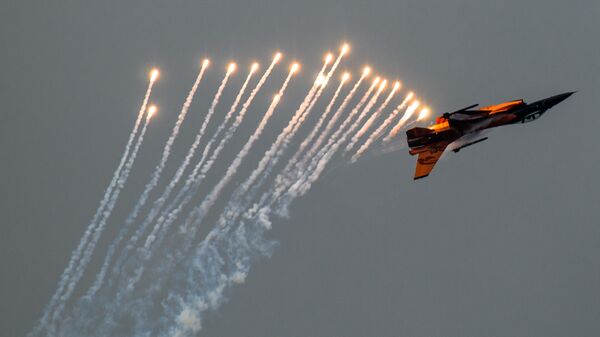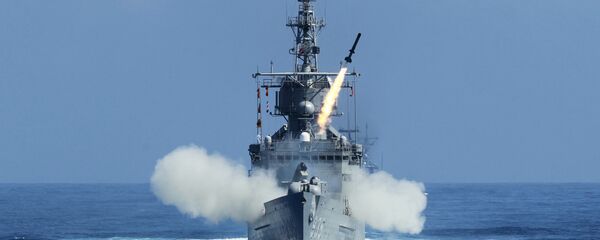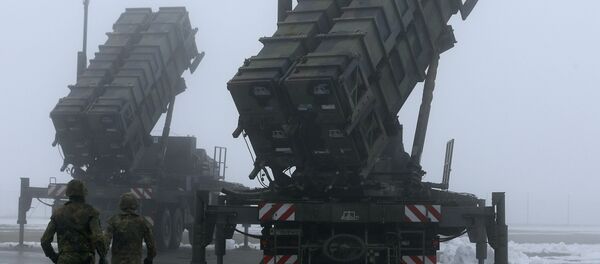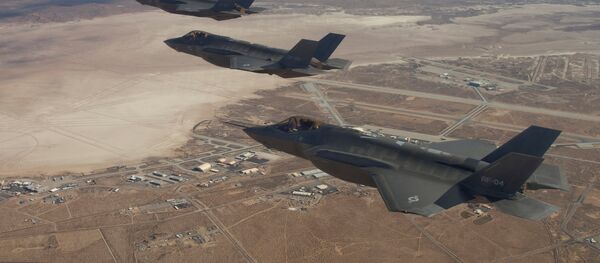The February 27 request from Taiwan's Ministry of National Defense actually made a broad and nonspecific request of Washington for new and advanced fighter jets in order to "demonstrate our determination and ability to defend ourselves," Deputy Defense Minister Shen Yi-ming told reporters.
At another event, Maj. Gen. Tang Hung-an, who heads the Taiwanese Air Force Command Headquarters Planning Division, said "the F-15, F-18, F-16 and even the F-35 are all among our options, as long as the jets help to strengthen our air defense capabilities," according to Focus Taiwan.
Taipei asked to buy new General Dynamics F-16s back in 2011, too, but was rebuffed by the Obama administration, which instead opted to help Taiwan refurbish its existing fleet of F-16A/B variants — the earliest versions of the aircraft, dating to the 1970s. The New York Times reported that many saw the move as a concession to Beijing: Texas Senator John Cornyn called it a "capitulation to communist China" that "represents a slap in the face to a strong ally and longtime friend."
Since then, Lockheed Martin, which now owns General Dynamics, has been working under a $5.3 billion contract to update Taipei's 144 F-16A/B Fighting Falcon jets. Renovation is expected to continue until 2023, Sputnik has reported.
However, the 66 new F-16s Taipei wants are of the V model, dubbed the "Viper." It sports a new weapons configuration enabling it to carry more munitions than before — and more advanced ones, too. It also includes the active electronically scanned array (AESA), a type of advanced radar that can more easily detect foes and is harder to jam.
If the US goes for the proposal, it could cost Taiwan anywhere between $7.76 billion and $13 billion, based on various estimates in different publications, including Defense News and Taiwan News. The US is expected to give its decision before June.
The Quwa defense news and analysis group notes that the F-16A/B models have old pulse-doppler radars, which use a single frequency radar pulse pointed in a single direction to identify targets. However, AESA uses many different pulses in many directions at once, giving pilots superior battlefield awareness and making the lives of enemies trying to jam their signals that much harder.
Typically found on large airborne early warning aircraft, only a couple of fighters use AESA radars: among the first was the Japanese F-2, an airplane built under contract starting in 2000 that is very closely derived from the F-16; however, the US only began putting AESA in its F-16s with the Viper model in 2012.
The Chinese People's Liberation Army Air Force (PLAAF), Taipei's primary adversary, uses AESA in two fighters: its highly advanced J-20 stealth fighter as well as its J-10B, both built by Chengdu Aircraft Corporation. The latter was developed as a response to the F-16 and has many of the same features and capabilities as the US jet.
Formally called the Republic of China, the government in Taipei represents all that remains of the republic founded in the 1911 to 1912 revolution that overthrew the last Chinese emperor, Pu Yi. However, by 1949, the communist People's Liberation Army, led by Mao Zedong, had triumphed in the decades-long civil war and secured control over all of mainland China, leaving the old government only on the island Taiwan, which the PLA was unable to mount an invasion of.
The US may be bound by the 1979 Taiwan Relations Act to "make available" to Taipei the tools it needs to "maintain a sufficient self-defense capability," but it also must navigate the realpolitik of not angering Beijing too much at the same time.
Washington maintains a precarious relationship with Taipei — unable to have formal diplomatic relations, the two governments communicate via the American Institute in Taiwan, which represents US interests on the island. Until 1979, the US recognized the government in Taipei as the legitimate government of all of China, but it switched its recognition to Beijing in an effort to cement the divide in the communist camp between the PRC and Soviet Union. However, the US has never officially recognized Taiwan as a sovereign independent country separate from China — a claim that Taipei has never made, either, although some speculate that President Tsai In-wen, who took office in 2016, could be moving toward such a declaration.




